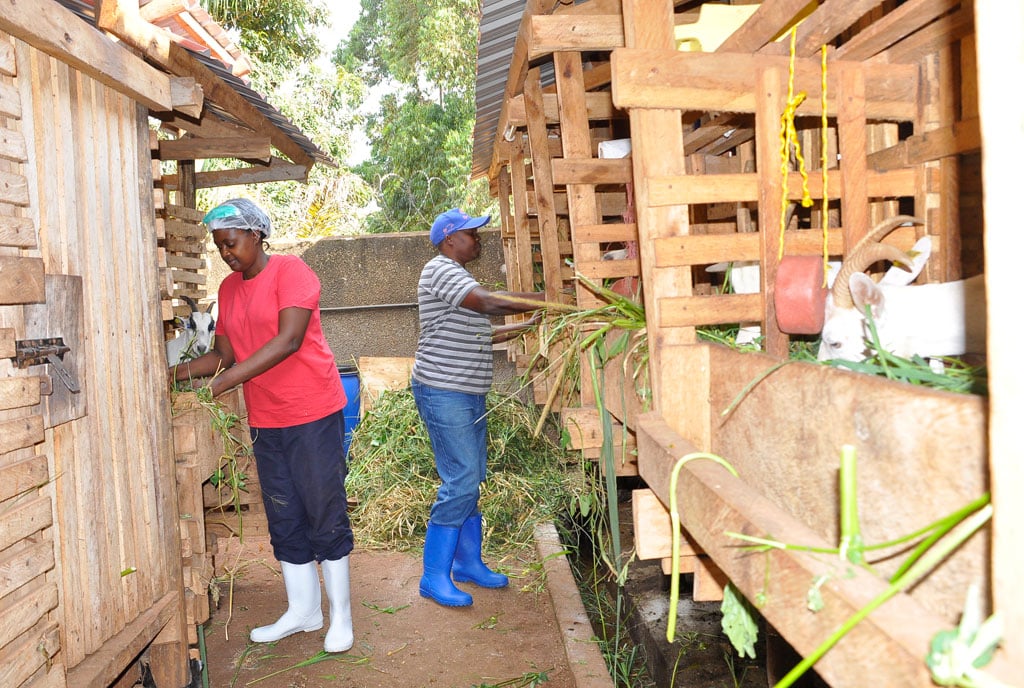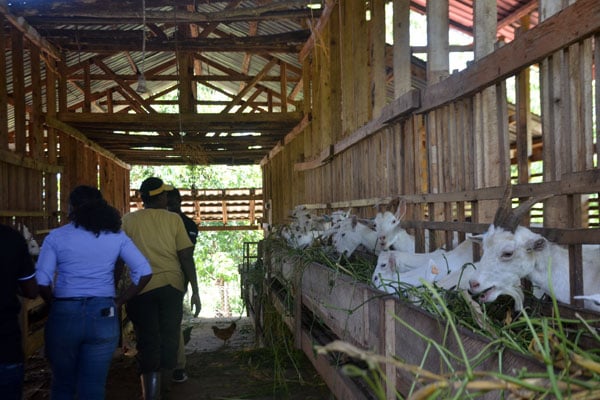
You may feed goats under zero grazing with fresh maize stalks PHOTO/FILE
Goat farming has been an essential part of agriculture for centuries, providing meat, milk, and fibre to communities around the world.
However, with advancements in technology and a growing demand for sustainable farming, the future of goat husbandry is evolving. From automated feeding systems to genetic selection for disease resistance, goat farmers are embracing new technologies to improve efficiency, productivity, and animal welfare.
In this article, we will explore the latest innovations in goat farming technology and how it is shaping the future of this ancient practice.
Advanced breeding techniques
Advanced breeding techniques are revolutionising the goat farming industry by allowing farmers to enhance productivity and quality in their herds.
One such technique is artificial insemination, which enables farmers to breed their goats with superior genetics without the need for physical mating.
This allows for the selection of specific traits such as disease resistance, milk production, and meat quality. Additionally, embryo transfer technology allows farmers to multiply the offspring of their best-performing goats, further improving the overall productivity of the herd.
Genetic selection through DNA testing is another advanced breeding technique that is gaining popularity. By analysing the genetic makeup of individual goats, farmers can identify desirable traits and make informed breeding decisions to improve the overall quality of their herd.
These advanced breeding techniques not only enhance productivity but also help in the development of more resilient and high-performing goat breeds for the future of goat farming.
On farm GPS tools
Precision agriculture involves using technology and data-driven tools to optimise farming practices and improve efficiency. In goat farming, precision agriculture can enhance productivity, reduce costs, and promote sustainability.
Goat farming may benefit from precision agriculture in part by tracking and observing the movement and behavior of the goats in the pasture using GPS technology. Grazing schedules, feed distribution, and herd management may all be better choices made by farmers with this information.
Vital indicators, like temperature and heart rate, may also be tracked in individual goats using sensors and monitoring equipment to identify health problems early on. This proactive approach to animal health care may reduce veterinarian expenses and enhance herd health.
Overall, precision agriculture in goat farming can lead to more efficient operations, better resource management, and, ultimately, increased profitability for farmers.
Innovative feeding solutions
Innovative feeding solutions play a crucial role in maintaining optimal health and productivity in goats.
One such solution is the use of precision feeding systems, which allow farmers to tailor feed rations to individual goats based on their nutritional needs and production goals.
This ensures that each goat receives the right balance of nutrients, leading to improved health and performance.
Another innovative feeding solution is the use of alternative feeds and forages, such as hydroponically grown fodder or silage.
These can help reduce feed costs and provide a diverse diet for goats. They can also supplement grazing during periods of drought or limited forage availability.
Smart monitoring systems
Smart monitoring systems for goat health and wellness utilise advanced technology such as sensors, wearable devices, and data analytics to track and analyse key health indicators in goats. These systems can monitor parameters such as body temperature, heart rate, activity levels, rumination, and even GPS location in real-time.
By collecting and analysing this data, farmers can detect early signs of illness, monitor reproductive cycles, optimise feeding schedules, and ensure the overall well-being of their goats.

A woman prepares to milk a dairy goat in Uganda. PHOTO/FILE
Smart monitoring systems also enable remote monitoring, allowing farmers to keep a close eye on their goats even when they are not physically present on the farm.
This proactive approach to goat health management can lead to early intervention, reduced veterinary costs, improved productivity, and, ultimately, better quality of life for the goats.
Pasture management
Smart monitoring systems, such as wearable devices and sensors, allow farmers to remotely track the health and behaviour of individual goats in real time. This enables early detection of health issues, improved management practices, and enhanced overall herd welfare.
Precision agriculture techniques, including GPS tracking, data analytics, and automated feeding systems, help optimise pasture management, feed allocation, and breeding programmes.
These technologies allow farmers to make data-driven decisions, reduce costs, and increase productivity. Genetic selection tools, such as DNA testing and artificial insemination, allow farmers to improve the genetic quality of their herds by selecting for desirable traits like disease resistance, milk production, and meat quality.
Role of genetics
Genetics influence various aspects of goat production, including milk yield, meat quality, disease resistance, and reproductive performance.
Selective breeding programmes aim to improve desirable traits in goats through genetic selection, such as increased milk production, faster growth rates, and better adaptation to specific environments.
Genetic technologies, such as DNA testing and artificial insemination, allow farmers to make informed breeding decisions and accelerate genetic progress in their herds.
By selecting superior genetics, farmers can enhance the overall productivity and profitability of their goat farming operation.
By preserving and managing genetic diversity within goat breeds, farmers can reduce the risk of inbreeding and increase the overall resilience of their herds to diseases and environmental challenges.
Housing solutions for goats
High-tech housing solutions for goats incorporate advanced technology to provide a comfortable, safe, and efficient living environment for the animals.
These solutions include features like automated climate control systems, ventilation systems, lighting controls, and automated feeding and watering systems.
Automated climate control systems help regulate temperature and humidity levels within the goat housing, ensuring optimal conditions for the animals year-round.
Ventilation systems help maintain air quality and prevent the buildup of harmful gases, while lighting controls can simulate natural daylight patterns to promote healthy growth and reproduction.
Automated feeding, watering systems ensure that goats have access to fresh food and water at all times, reducing labour requirements and minimising feed wastage.
These high-tech housing solutions enhance goat welfare and productivity and improve overall efficiency and sustainability in goat farming operations.
Watering systems
Smart watering systems for efficient goat farming utilise technology to optimise water usage, ensure proper hydration for the animals, and reduce labour requirements.
These systems typically include sensors, controllers, and automated watering devices that monitor water levels, flow rates, and water quality in real time.
Sensors installed in water sources and watering devices can detect water levels and monitor water quality parameters such as temperature and pH.
Controllers can adjust water flow rates based on the animals’ needs and environmental conditions, ensuring a consistent and adequate water supply.
Automated watering devices deliver water to the goats at specified intervals or on demand, reducing water wastage and preventing contamination.
Artificial insemination
Advanced breeding techniques are revolutionising the goat farming industry by allowing farmers to enhance productivity and quality in their herds. One such technique is artificial insemination, which enables farmers to breed their goats with superior genetics without the need for physical mating.
Additional reporting agrifarming




